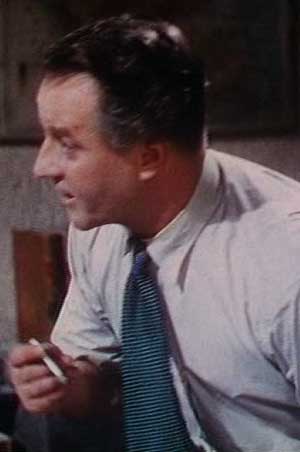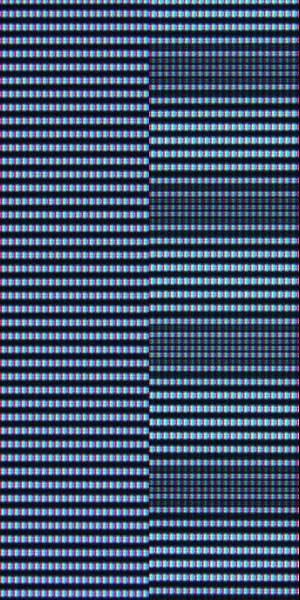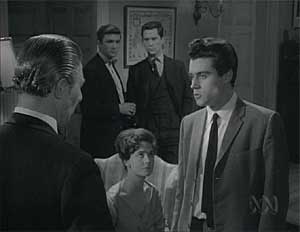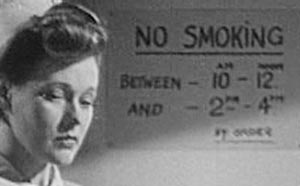Some years ago I received a DVD player for review. Before I had a chance to get it out of the box, I received a call from the PR company. The previous reviewer had accidentally left a DVD in it, so could I post it to him? Sure, not a problem.
In case that reviewer happens to be reading this, don’t worry: I can’t remember who you are, or even which particular brand of DVD player I was reviewing. You see, the said disc turned out to be an adult movie (I shall avoid the ‘p’ word so as not to tempt Net Nanny and the like to blacklist this site).
Now I read that Sony apparently says it will not source its Blu-ray discs from disc replicators which also produce discs for the adult film industry. Apparently Disney has the same policy.
I have been fairly dismissive of claims that either Blu-ray or HD DVD is significantly superior to the other. Blu-ray is perhaps a little more attractive because of the greater disc capacity. But so far it has largely negated that by using the MPEG2 video compression scheme for most releases (certainly, all that I’ve seen), rather than the more efficient systems available (all the HD DVD discs I’ve seen use the more highly developed, and much newer, VC-1 system).
In order to achieve its higher capacity, the Blu-ray crowd have re-designed the discs themselves. DVDs, HD DVDs and BDs (Blu-ray Discs) are all 1.2mm thick. But DVDs and HD DVDs have their data half way down through the disc’s thickness: that is, they have a 0.6mm layer of transparent plastic on top of the data. BDs have the data much nearer to the playing surface, just 0.1mm down. To overcome possible damage to the data from scratches and the like, BDs use a much harder plastic.
This closeness of the data layer to the surface is what allows the higher data density.
Toshiba has often touted the more traditional structure of HD DVDs as an advantage of its format. It argues, probably correctly, that current DVD production equipment can be used to produce HD DVDs, rather than the expensive new equipment required for Blu-ray. I haven’t found this a persuasive argument because whichever the format, disc production costs are a tiny percentage of the release costs of any movie.
But this story puts a new slant on it. If you have invested in expensive new equipment for BD production, would you be prepared to eliminate from your customer list both Disney and Sony (which owns the Columbia, TriStar and MGM movie catalogues) in order to press Blu-ray adult films? DVD production equipment, though, is relatively cheap.
So expect high definition adult material to appear on HD DVD rather than Blu-ray. The more cynical may suggest that this will ensure the success of HD DVD and the eventual demise of Blu-ray. I doubt it myself, but it will be interesting to see what does happen.
UPDATE (Wednesday, 11 April 2007, 12:22 pm): Looks like this isn’t going to be the case after all.

 As I was watching, I noticed that there was a moire pattern on the fine texture of the necktie of one of the characters. So I recorded a snippet of the video.
As I was watching, I noticed that there was a moire pattern on the fine texture of the necktie of one of the characters. So I recorded a snippet of the video. Last night I started working on a blog entry on this subject, but soon after I started I realised that I was putting in too much work to just give it away. So this is just a brief taste. Full details will be in a forthcoming issue of Sound and Image magazine.
Last night I started working on a blog entry on this subject, but soon after I started I realised that I was putting in too much work to just give it away. So this is just a brief taste. Full details will be in a forthcoming issue of Sound and Image magazine. Remember, ABC TV is unusual in delivering two audio streams. There is an two channel MPEG2 stream at 256kbps, and a high bitrate Dolby Digital stream. This runs at 448kbps (the maximum provided on DVDs, although Dolby Digital actually supports up to 640kbps) and last time I checked was in two channel format.
Remember, ABC TV is unusual in delivering two audio streams. There is an two channel MPEG2 stream at 256kbps, and a high bitrate Dolby Digital stream. This runs at 448kbps (the maximum provided on DVDs, although Dolby Digital actually supports up to 640kbps) and last time I checked was in two channel format. We all know that ‘
We all know that ‘ It isn’t easy to be a TV cinematographer these days. The other night I was watching
It isn’t easy to be a TV cinematographer these days. The other night I was watching  A couple of people have emailed me, politely I’m happy to report, wondering whether I’m ever again going to add something to this blog. For the past, ugghh!, four months I haven’t felt inspired enough to add anything new here. I’ll try to do better.
A couple of people have emailed me, politely I’m happy to report, wondering whether I’m ever again going to add something to this blog. For the past, ugghh!, four months I haven’t felt inspired enough to add anything new here. I’ll try to do better.